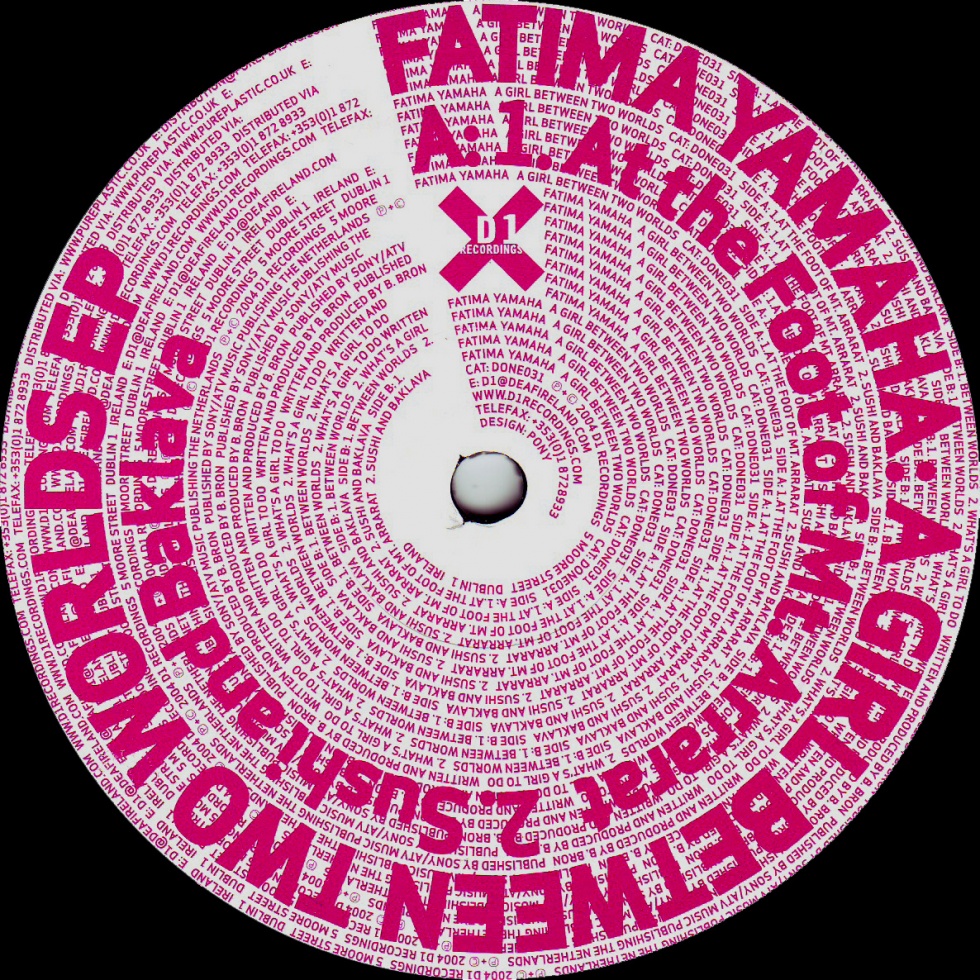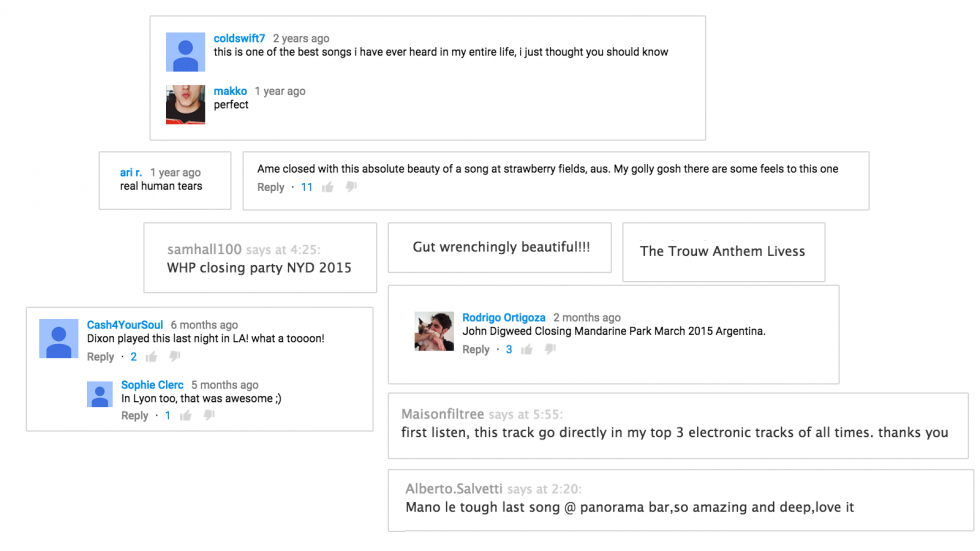– One of the biggest surprises at our three-day stage at Dekmantel Festival this year was the mysterious character behind a quietly-affecting, slow-burning dancefloor classic: Fatima Yamaha. Even we were unsure of quite how the performance would manifest in reality, but on the basis of their re-re-repressed ‘hit’, we’re naturally fascinated to find out.
Given how her hometown of Glasgow wound up playing a pivotal role in the strange tale of the track’s enduring legacy, we asked RBMA’s Lauren Martin to try and make sense of it all. –
You’d need all fingers and some toes to weave the tangled web of Glasgow’s clubbing history: of parties and pals, nicknames rather than aliases, the carry-on carrying on until that guy from the queue invites you and your pals round for the afters and then, a few weeks later, you’re DJing together in a some dingy basement party with everyone you know in tow; and all within a few miles radius. For our purposes, it’s April 2007: four years into Numbers‘s existence – although it’s three years before it will become a label, and it still overlaps with another party called Seismic, whose bookings fall into the ravier bracket of techno that the of stalwarts like Slam‘s Pressure can’t quite (or don’t want to) find a rhythm for in their kick-drum heartbeat.
We’re charging through the Blackfriars basement with a guy called Seymour Bits, playing electronic funk with a smart crack of the heels. At some point, residents Spencer and Jackmaster ask Seymour Bits to play one track in particular of his own; yet, he’s reluctant. It’s too downbeat for the up-for-it crowd, he claims. They insist. As a compromise, perhaps, he plays it sped up – and it’s greeted by the loudest screams of the night. It worked.
You might have guessed, but Seymour Bits isn’t really called Seymour Bits. He’s a Dutch DJ and producer called Bas Bron and three years prior this Seismic party, he made a track under the alias Fatima Yamaha (normally I’d afford a side-eye to the gender fudging here but, in a similar vein to the Numbers crew’s early adoption, this seems to have helped lay a blueprint rather than follow a lead). “What’s A Girl To Do” featured on the A Girl Between Two Worlds EP, and was originally released on Irish label D1 Recordings in 2004 in tandem with Bron’s Magnetron label.
Bron was maybe right to be unsure about it then: it’s that bit too pop for the techno militia, or maybe too placeless for the loose-limbed frenzies of a city that worships at the twin altars of Detroit and Chicago. So why did the Seismic crew want to hear it so much? It might be, in part, down to the fact that Glasgow was one of the first cities to pick it up: Jackmaster’s employer was the first to put the D1 release out into the world; the record shop and distributor Rubadub remains to this day a hub for Glaswegian dance music tastes. Who knows of the exact exchange at Seismic, though, but I doubt I’d lose if I bet that they called it a “belter”: that ubiquitous Glaswegian word that means that, for whatever myriad reasons, it just works.
Perhaps, though, it’s also that “What’s A Girl To Do” doesn’t want or need to work, at least in the sense of ‘functionality’ of the peak-time techno dancefloor. “What’s A Girl To Do” begins as it means to go on and all too soon ends: a peach bruised by itself, tumbling along in earnest. It’s somewhere between the Nile Rogers school of pop composition, in which each hit begins and moves forward with its own drop, and the lilting melancholies of The Other People Place; steady techno tick-tick-ticks of bass and keys that soar among and sooth one another. Up close, it’s electronic pop with an old school electro sensibility and warm licks of low-key funk. But take a step back and the whole is less certain and more considered for it.

After the initial release, it bubbled gradually for four years, nudged gently by various remix treatments before Jackmaster opened his first Tweakaholics mix with it in ’08, right on the cusp of Numbers finally leaving the basement parties and moving up onto the Sónar Festival stage and beyond. Then followed the champion charge of Hudson Mohawke, who included it in his Essential Mix around the time “Fuse“‘s spark was lit. These Glasgow tastemakers were starting to go global, and Fatima Yamaha’s track was often on their minds. Once it was in clubs and mainstream radio the bubbling intensified until A Girl Between Two Worlds was expanded into the Between Worlds album, and released as a free download in 2012 through the D1 Bandcamp.
Let’s get it straight: the smutty strut of the expanded release is an enjoyable one. The re-arrangement of the tracklist to fold the newer productions into the original EP moves without effort, and the original melody is repurposed for the tougher bounce of closer “To Do Two,” but it’s the enduring popularity and strangeness of the B2, the track kept bang in the middle of the run, that the tracks leading up to and the ones coming after do their utmost to follow. Once it was out again, its extended reach wasn’t marred by restrictions of price and format: by the time Northern Irish duo Bicep posted the free download on their Feel My Bicep blog in late 2014 the vinyl of the original EP had tipped well over the £100 mark on Discogs. But it didn’t really matter that much to many, did it? It was everywhere.

Then there’s the relative democracy of YouTube: a website that’s only a few months older than the track itself, and has, like so many jams confined to rare pressings and ‘lost’ cuts, given “What’s A Girl To Do” renewed life. Nearly every other comment on uploads of it is a re-telling of where and when a username, fleshed out and present, heard this DJ play it at that festival; how they had lost their friends and had no idea where they were heading to next but, my god! Each rumbling pad is a blink that lasts just long enough for you to notice, until the whole becomes a cool burst of air that softens the dying high.
Into the after hours, too, it lives on. It steadies the fizzing adrenalin as you move through the glut of bodies, opting now to hug a wall and observe the romantic comedy of manners in play; the protracted sensual tease of the whole interrupted only by that voice, leaning in among the beat, and saying with lingering sincerity that she doesn’t know who she’s supposed to be, and wondering if it will get any easier. “What’s A Girl To Do” works because it’s not all things to all people – more, it’s those strangely specific yet uncertain things that occupy us.
Not long after the news that the namesake label of Amsterdam’s Dekmantel have linked up with Magnetron to re-release the expanded version on vinyl this month, as an apt prelude to Fatima Yamaha’s set at the 2015 edition of festival, a collaboration with R&B singer Jhené Aiko appeared on HudMo’s Soundcloud [Dep Ed: although now mysteriously pulled down]. It’s a new one, from his forthcoming album Lantern, and it samples the skeletal Yamaha melody with the kind of brazen smarts that’s made his name, and would make some fans cast a wilting gaze over that big, orange play button.
But, that’s the beauty of “What’s A Girl To Do”: it’s had 11 years of life without becoming tired – independently released, rinsed, quietly sung about until it’s the sleepy peak-time hit that you sing like techno karaoke, released again and again – and if anyone other than the man who made it has a backstory worth telling and re-shaping, it’s one of the Glaswegians who championed it. Hell, it’ll be pretty cool when there’s a YouTube upload of him playing it at some gargantuan American festival, maybe with Jhené front and centre, and with thousands of teenagers screaming this odd, beautiful melody back to him.
– Fatima Yamaha played Day 3 of our stage at Dekmantel Festival 2015. Relive the whole weekend here.